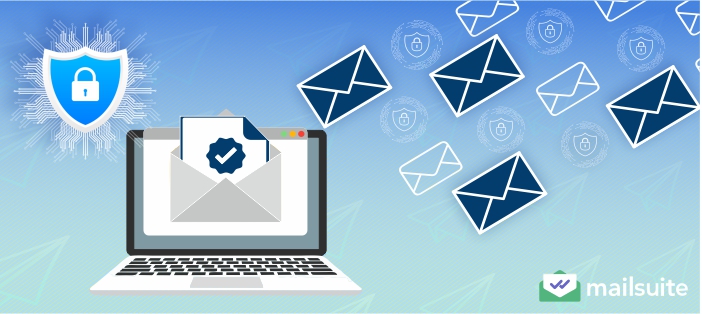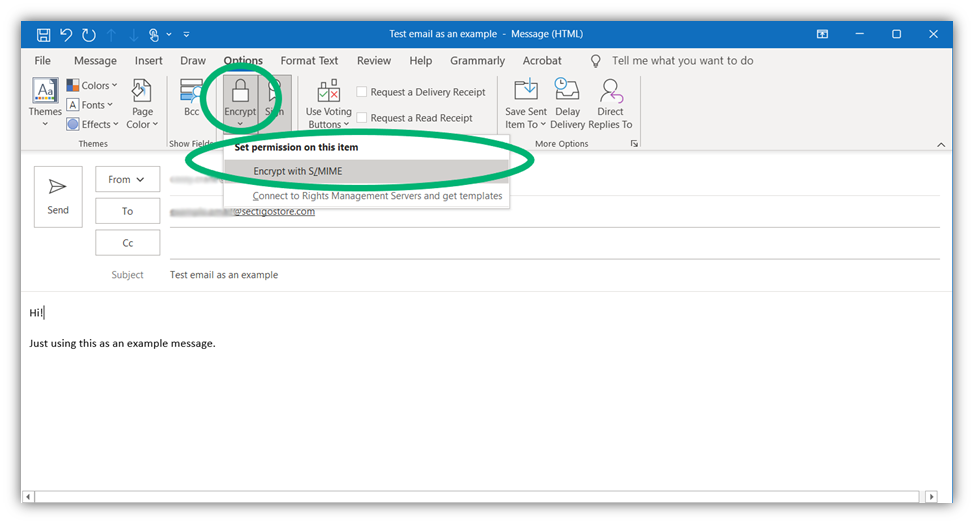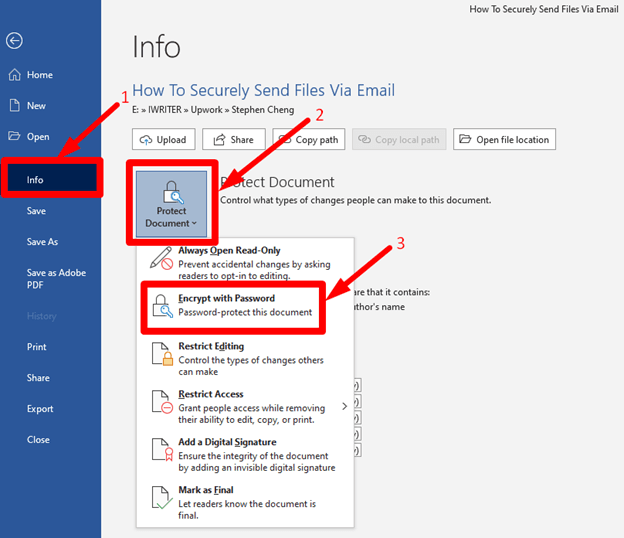Sending documents securely through email is essential. It protects sensitive information from unauthorized access.
In today’s digital age, emails are a common way to share documents. However, without proper security, your files can be at risk. Cyber threats are everywhere, and it’s crucial to keep your data safe. This blog post will guide you on how to send documents securely via email.
You’ll learn practical steps to ensure your information stays private. From encryption methods to secure passwords, we’ve got you covered. Stay tuned to discover simple yet effective ways to protect your documents. Don’t let your important files fall into the wrong hands. Keep reading to make your email communication secure and worry-free.
Choosing Secure Email Services
Choosing secure email services is crucial for protecting sensitive documents. Regular email providers might not offer the best security features. Opting for a secure email service ensures your documents remain confidential and safe.
Top Secure Email Providers
Several email providers prioritize security. ProtonMail is a popular choice, offering end-to-end encryption. Tutanota also provides strong encryption and focuses on user privacy. Hushmail combines encryption with ease of use. Each of these services has unique features to keep your documents secure.
Comparing Features And Security
ProtonMail offers end-to-end encryption and is open-source. It does not store IP logs, adding extra privacy. Tutanota encrypts all data, including subject lines. It also features two-factor authentication. Hushmail allows encrypted communication with non-users. It includes built-in encryption and optional two-factor authentication.
Comparing these features helps you choose the best service for your needs. Consider what is most important: ease of use, extra privacy features, or strong encryption. Each provider has strengths, so choose based on your specific requirements.
Credit: www.fileinvite.com
Encrypting Your Documents
Encrypting your documents is crucial for secure email communication. This process ensures only authorized recipients can access your files. Encryption protects sensitive information from unauthorized access and cyber threats. Let’s dive into the different types of encryption and the tools available for document encryption.
Types Of Encryption
There are various encryption methods to secure your documents. Symmetric encryption uses a single key for both encryption and decryption. It’s fast and efficient but requires key sharing. Asymmetric encryption uses two keys: a public key for encryption and a private key for decryption. It’s more secure but slower. Hashing converts data into a fixed-size string of characters, creating a unique digital fingerprint. It’s used for data integrity, ensuring the document hasn’t been altered.
Tools For Document Encryption
Several tools can help you encrypt your documents. For instance, GnuPG is a free software that offers encryption and signing of data. VeraCrypt provides on-the-fly encryption for files and folders. Microsoft Office has built-in encryption features for Word, Excel, and PowerPoint. Adobe Acrobat allows you to password-protect and encrypt PDF files. Using these tools ensures your documents remain confidential during email transmission.
Using Password Protection
Protect sensitive information by using password protection on email attachments. This ensures only authorized recipients can access the documents. Encrypt files before sending for added security.
Sending documents securely through email is crucial. One effective method is using password protection. This ensures only authorized recipients can access the files. Let’s explore how to create strong passwords and share them safely.Creating Strong Passwords
A strong password is vital for security. Use a mix of uppercase and lowercase letters. Include numbers and special characters. Avoid common words or easily guessable information. Aim for at least 12 characters.Consider using a password manager. It can generate and store complex passwords. This reduces the risk of forgetting them. Change your passwords regularly. This adds an extra layer of security.Sharing Passwords Safely
Never share passwords through the same email as the document. Use a different communication method. You can send the password via text message or phone call. This way, even if the email is intercepted, the password remains safe.Another option is using encrypted messaging apps. These apps offer secure ways to share sensitive information. Always verify the recipient’s identity before sharing passwords. This ensures the information reaches the correct person.Using these methods, you can send documents securely through email.
Credit: mailsuite.com
Secure Email Attachments
Sending documents through email is convenient but can be risky. Secure email attachments are essential to protect your sensitive information. Let’s explore best practices and the risks associated with unsecured attachments.
Best Practices For Attachments
Always use strong, unique passwords for your attachments. Encrypt files before sending to add an extra layer of security. Keep your software updated to protect against vulnerabilities. Avoid sending sensitive information in the email body. Consider utilizing services that allow you to send secure email attachments in Gmail, which can provide end-to-end encryption for your files. Additionally, be cautious about the recipients of your attachments; ensure they are trustworthy and that you’re sending information only to those who need it. Regularly review your sent emails and attachments to be aware of any sensitive information that may have been shared inadvertently.
Double-check the recipient’s email address to ensure the document goes to the right person. Use trusted antivirus software to scan files before attaching them. Consider using secure file-sharing services for large files.
Risks Of Unsecured Attachments
Unsecured attachments can be intercepted by hackers. They can steal or alter your sensitive information. Malware and viruses can be hidden in attachments, compromising your device. Unencrypted files are easy targets for cybercriminals.
Sending attachments without proper security measures can lead to data breaches. This can result in financial loss and damage to your reputation. It’s crucial to understand these risks to protect your information.
Two-factor Authentication
Sending documents via email is convenient, but security is crucial. Two-Factor Authentication (2FA) adds an extra layer of protection. It ensures only the intended recipient accesses sensitive information. This method is simple and effective. Below, learn why 2FA matters and how to set it up.
Why Two-factor Matters
Two-Factor Authentication strengthens email security. Even if someone steals your password, they can’t access your account without the second factor. This second factor is usually a code sent to your phone. It prevents unauthorized access. Hackers find it harder to break into accounts with 2FA. Your documents remain safe.
Setting Up Two-factor Authentication
Setting up 2FA is simple. First, log into your email account settings. Look for security or privacy options. Select Two-Factor Authentication. Follow the prompts to add your phone number. You’ll receive a verification code. Enter this code to complete the setup. Now, you have an extra layer of security. Each time you log in, you’ll need both your password and the code sent to your phone.
Avoiding Phishing Scams
Sending documents through email is common. But it’s essential to avoid phishing scams. Phishing scams trick you into giving away personal information. They often look like genuine emails. But they’re designed to steal your data.
Identifying Phishing Emails
Phishing emails often have strange email addresses. Check the sender’s email address. If it looks odd, be cautious. Phishing emails may also have spelling mistakes. Look for errors in the email body.
Phishing emails often ask for personal information. They may ask for your password or bank details. Genuine emails from trusted sources won’t ask for this. Be wary of urgent language. Phishing emails often create a sense of urgency. They may say your account will be closed. Don’t rush to respond.
Preventing Phishing Attacks
Use strong passwords and change them regularly. Strong passwords are hard to guess. They include letters, numbers, and symbols. Enable two-factor authentication (2FA). This adds an extra layer of security.
Keep your software up-to-date. This includes your email client and operating system. Updates often fix security vulnerabilities. Be cautious with links and attachments. Don’t click on links or download attachments from unknown sources.
Use email filtering tools. Many email services offer spam filters. These can help identify and block phishing emails. Educate yourself and others. Learn about the latest phishing tactics. Share this knowledge with friends and colleagues.
Monitoring Email Activity
Sending documents securely through email is crucial to protect sensitive information. Use encryption tools to ensure privacy. Always double-check the recipient’s address before sending.
Sending documents securely through email is crucial in today’s digital age. Monitoring your email activity is an essential step to ensure your documents reach the right person without falling into the wrong hands. This section covers how to track your sent emails and how to respond if you notice any suspicious activity.Tracking Sent Emails
Tracking sent emails is like having a virtual receipt. It confirms that your email was delivered and read.Many email services offer read receipts or tracking tools. Use these features to know when your recipient has opened the email.Tools like Mailtrack or Boomerang can help you track whether an email was opened. They also notify you if the recipient clicked on any links in your email.Have you ever wondered if your important document was actually received? Tracking tools give you peace of mind.Responding To Suspicious Activity
Imagine sending an important document only to find out it was accessed by an unknown party. Scary, right?If you notice any unusual activity, act quickly. First, change your email password immediately.Notify your recipient to ensure they are aware of the potential breach. They might need to take action on their end.Consider using email encryption tools like ProtonMail for added security. These tools can make your emails harder to intercept.Keep your email security settings updated. Regularly check for suspicious login attempts or unauthorized access.Finally, always be cautious. If something feels off, trust your instincts and take action. Your email security is in your hands.Regular Security Updates
Sending documents securely through email is crucial in today’s digital age. One of the key practices to ensure the safety of your documents is to keep up with regular security updates. These updates play a pivotal role in protecting your email communications from potential threats.
Importance Of Updates
Security updates are essential for safeguarding your email system. They fix vulnerabilities that hackers might exploit. Ignoring these updates can leave your information exposed to cyber-attacks.
I once neglected an update on my email client and ended up with a malware infection that compromised my data. This experience taught me the critical importance of timely updates. Don’t wait for a security breach to prioritize your updates.
By keeping your email software updated, you ensure that the latest security patches are in place. This minimizes the risk of unauthorized access to your sensitive documents. Have you been diligent about your security updates?
Updating Email Security Settings
Besides software updates, it’s important to regularly review and update your email security settings. This includes enabling two-factor authentication (2FA) and ensuring that encryption settings are active. These measures add an extra layer of protection for your documents.
Check your email provider’s security options. Many offer built-in tools to enhance your email’s security. For instance, Gmail has a security checkup tool that guides you through the process of securing your account.
Also, look out for phishing warnings and spam filters. These settings help in identifying and blocking potentially harmful emails. Have you reviewed your email security settings recently?
Regularly updating your email security settings and software is a simple yet effective way to protect your documents. Stay proactive and keep your email system secure.

Credit: sectigostore.com
Frequently Asked Questions
What Is The Most Secure Way To Send Documents By Email?
Use encrypted email services to send documents securely. Password-protect attachments and share passwords separately. Avoid public Wi-Fi networks.
How Do I Send An Email Attachment Securely?
Use encrypted email services. Always password-protect attachments. Share the password through a separate channel. Avoid public Wi-Fi when sending. Verify recipient’s email address.
Is It Safe To Send Confidential Documents Via Email?
Sending confidential documents via email can be risky. Encrypt files and use secure email services to enhance safety. Consider alternatives like secure cloud storage or encrypted messaging platforms. Always ensure recipient’s email security measures are reliable.
How To Send Pdf Documents Securely Via Email?
Encrypt the PDF before sending it. Use a strong password. Share the password through a different communication channel. Utilize secure email services. Avoid sending sensitive information through public Wi-Fi.
Conclusion
Sending documents securely through email is essential. Use encryption tools for safety. Ensure strong passwords for your accounts. Avoid sending sensitive data over public Wi-Fi. Double-check recipient addresses before sending. Use email services with built-in security features. Regularly update your software.
These steps help protect your information. Make secure email practices a habit. Stay vigilant and keep your documents safe.
